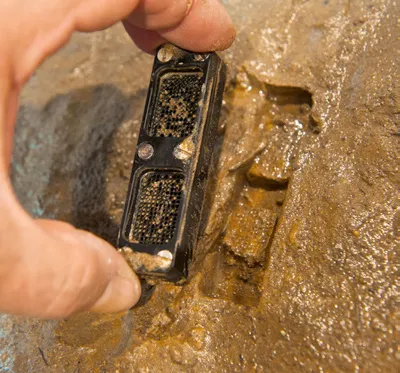Will new antibiotic Teixobactin save us all?
Siouxsie Wiles - 1st February 2015
Umm, not quite…
Researchers in Germany and the USA have just published a paper in the journal Nature describing a new antibiotic they have called Teixobactin. This study is good news: the World Health Organization warned last year that cancer chemotherapy and routine surgery will soon become life-threateningly risky because of the worldwide rise in antibiotic-resistant superbugs.
So will Teixobactin save us all from a post-antibiotic era? Maybe, but not in the way you think it might. Here’s a little FAQ.
What is Teixobactin?
Teixobactin is a newly discovered antibiotic produced by a previously uncultured soil bacterium called Eleftheria terrae. Teixobactin acts by stopping some bacteria from making their cell wall (their outer coating, if you like). It was found to be active against a range of nasty bacteria, including Staphylococcus aureus (also known as MRSA), Clostridium difficile (which causes nasty diarrhoea which can be deadly in elderly people), Bacillus anthracis (which causes anthrax) and Mycobacterium tuberculosis (the cause of TB). This is good news as we have a desperate need for new antibiotics against these superbugs.
The researchers also showed that Teixobactin did not have any effect on mammalian cells and could protect mice infected with S. aureus and Streptococcus pneumoniae. This is also good news but it will still take 2-5 years more testing before Teixobactin makes it to a doctor’s surgery or hospital near you.
So why isn’t Teixobactin going to save us all?
Because bacteria roughly divide into two groups based on their cell walls; they are either classified as Gram-positive or Gram-negative*. Teixobactin only works against Gram-positive bacteria.
Unfortunately, it can’t get around the extra outer membrane of Gram-negative bacteria. This means the antibiotic doesn’t work against some pretty nasty bacteria that we are running out of antibiotics to kill, like E. coli, Pseudomonas aeruginosa and Klebsiella.
Finding new antibiotics – the iChip.

How the researchers discovered Teixobactin is in some ways more important than the antibiotic itself. Many microbes remain undiscovered, partly because it has been impossible to culture them in the laboratory. Given that antibiotics are made by microbes, this means that many antibiotics lie undiscovered all around us. The researchers made a sort of ‘hotel’ for soil bacteria that allowed them to cultivate previously uncultivated bacteria. This ‘hotel’ is called the iChip and is basically a board with holes on it. Each whole was seeded with a single bacteria from a sample of soil, and then the whole board, covered in a permeable membrane, was dunked into a beaker of soil so the bacteria could access all the nutrients they needed to grow. Very clever. The discovery of Teixobactin should be just the tip of the antibiotic iceberg.
Is Teixobactin really resistant to resistance?
One of the interesting findings of the study was that the researchers couldn’t produce strains of M. tuberculosis or S. aureus that became resistant to Teixobactin. I think it’s a little premature to suggest that bacteria are unlikely to become resistant to Teixobactin based on the published data; the researchers didn’t try particularly hard to make it happen.
As Dr Prof. Ian Malcolm says: “Life finds a way”….
*depending on whether or not they can be stained using crystal violet, a method known as Gram-staining.